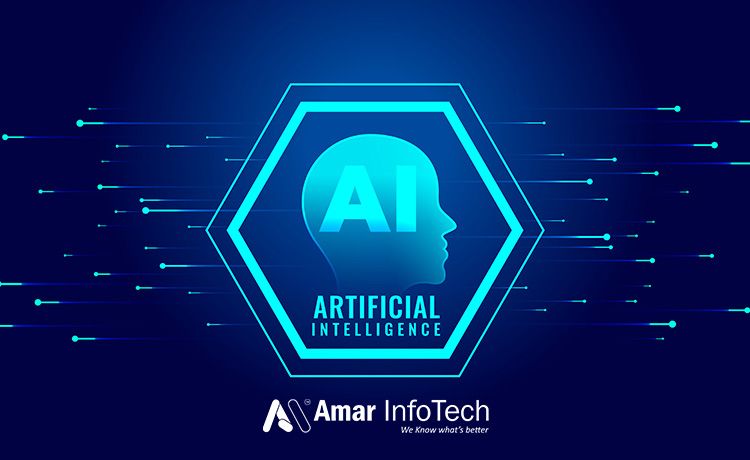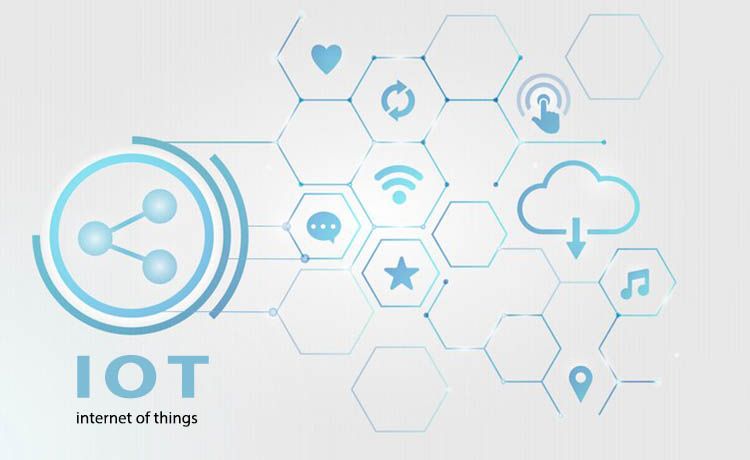Artificial intelligence is a way of making a computer, a computer-controlled robot or a Software think intelligently, in the summer manner the intelligent humans think. Artificial intelligence uses data science and algorithms to automate, optimize and find value hidden from the human eye. By one estimate, artificial intelligence will drive nearly $2 trillion worth of business value worldwide in 2019 alone.
Artificial Intelligence is the rage now, but like all things tech, it is in a continuous state of evolution. Here is how Artificial intelligence is expected to play out in 2019.
Deep Learning
Deep learning is an Artificial Intelligence form, which develops algorithms called artificial neural networks working by modelling the human brain function and structure. Machine learning has been demand for a long time, however, jobs including deep learning have risen 35 fold between 2015 and 2017.
There’s been a lot of attention in recent years about how artificial intelligence and Machine learning. Numerous areas of Artificial intelligence application and technologies like computer vision, autonomous vehicles, automatic text generation and so on are the fields where deep learning use is at its peak.
Facial Recognition
Facial recognition is a form of artificial intelligence application that helps in identifying a person using their digital image or patterns of their facial features. 2019 would seen an increase in the usage of this technology with higher accuracy and reliability.
Despite having a great deal of negative press recently, facial recognition technology is regarded as the Artificial Intelligence applications future due to its immense popularity. It promises an immense growth in 2019, and further.
The year 2019 will witness a growth in the use of facial recognition technology with more reliability and enhanced accuracy. These days we are moving toward making all personalized, whether shopping or advertising and so on. As a result, this technology must be used for bio metric identification to a large extent.
These next generation image recognition technologies can be used for healthcare purpose as well to follow through clinical trials as well as medical diagnostic procedures. Some other uses like payment processing by means of security checks and for low enforcement will be at the peak.
Open water, an imaging technology forerunner capable of reading images from our brains, is likely to have a bright future.
AI-Enabled Chips
Artificial intelligence heavily banks on specialized processors completing the CPU. Even the highly-advanced CPU may not improve the speed of training an AI model. While inferencing, the model needs additional hardware to perform complex mathematical computations to speed up tasks such as object detection and facial recognition.
In the year 2019, chip manufactures like NVIDIA, Intel, ARM, AMD and Qualcomm will ship specialized chips capable of making the execution of artificial intelligence application much faster. This chips will be optimized for specific use cases and scenarios related to computer vision, natural language processing and speech recognition.
Future artificial intelligence applications from the automobile and healthcare industries will banks on these chips to provide intelligence to end users. In a nutshell, AI-enabled chips turn out as the current trend in artificial intelligence.
2019 will also be the year where hyper scale infrastructure companies like Amazon, Microsoft, Google , Facebook will increase the investments in custom chips based on field programmable gate arrays(FPGA) and application specific integrated circuits(ASIC).
Quantum Computing
Quantum computing is a new paradigm that will play a big role in accelerating tasks for AI. we want to offers researchers and developers access to open source frameworks and computing power that can operate beyond classical capabilities.
Google AI Quantum is advancing quantum computing by developing quantum processors and novel quantum algorithm to help researchers and developers solve near-term problems both theoretical and practical.
Quantum computers use quantum physics to compute calculations faster than any supercomputer today. We are well aware of how computers use bits and bytes. However unlike a regular computer computer, quantum computers use qubits to store information.
We have a long way to go in terms of dealing with the challenges of quantum computing like maintaining coherence of the qubits or removing the unnecessary and noisy computations. The interesting problems could be to solve almost unsolvable problems like climate change, presence of earth like planets in the galaxy or our body’s ability to destroy cancer.
Convergence of IoT and AI at the edge
In 2019, AI meets IoT at the edge computing layer. Most of the models trained in the public cloud will be deployed at the edge. 2019 would see more examples of the convergence of AI with IoT and AI with Block chain.
Industrial IoT is the top use case for artificial intelligence that can perform outlier detection, root cause analysis and predictive maintenance of the equipment.
In fact self-driving cars is not a practical possibility without IoT working closely with AI. the sensors used by a car to collect real-time data is enabled by the internet of things (IoT) and the programs used for decision-making is powered by AI models.
Advanced ML models based on deep neural networks will be optimized to run at the edge. They will be capable of dealing with video frames, speech synthesis, time-series data and unstructured data generated by devices such as cameras, microphones, and other sensors.
IoT is all set to become the biggest driver of artificial intelligence in the enterprise. Edge devices will be equipped with the special AI chips based on FPGAs and ASICs.
Privacy and policy
The introduction of GDPR became the talk of the town in 2018. And, 2019 seems to experience further privacy and policy conversation. It’s important for privacy protection and sincere access to data privacy.
Most of us are unaware of how our digital information is being used. It is sometimes lost in the fineprint and other times not even informed about it’s usage. Facebook's recent crisis over privacy policies is the tip of the iceberg.
The matter of consent of use of a system, particularly around artificial intelligence applications would be huge providing that the laws that surround AI are still new and require further understanding.
All countries across the world would keep working on strategies and initiatives for the guidance of artificial intelligence regulation development. Criteria that are necessary to make sure that transparency, safety and awareness of the complex technologies of AI would be developed too.
Role of cloud in artificial intelligence Application
According to an expert report, the largest public cloud providers will have a rise in 2019, on the other hand, enterprise spending will increase.
The six well-known hyperscale cloud leaders Amazon Web services (AWS), Alibaba, Google, IBM, Microsoft Azure, and Oracle will become larger in 2019, as per the report prediction, as service catalogues and global regions expand.
Almost all tech savvy people these days know about the potential of cloud computing technology and how cloud platform has already affected businesses by effectively storing data and balancing the existing workloads. Because cloud computing is a cutting-edge technology, a lot of companies need time to think and understand how cloud will continue to rise with time.
Cloud technology saw major changes when change in trends when mobile phones started replacing computers and the Internet Of Things(IoT) platform came into picture. The Next big thing now is to see how Artificial intelligence(AI) improvise cloud considering the way cloud technology has improvised AI development.
AI will automate DevOps through AIOps
Modern applications and infrastructure are generation log data that is capture for indexing, Searching, and analytics. The massive data sets obtained from the hardware, operating systems, server software and application software can be aggregated and correlated to find insights and patterns.
DevOps is all about automation of tasks. Its focus is on automating and monitoring steps in the software delivery process, ensuring that works gets done quickly. AI and ML are perfect fits for a DevOps culture. If DevOps’ goal is to unify development and operations, AI and ML can smooth out some of the tension that separate the two disciplines in the past. When machine learning models are applied to these data sets, IT operations transform from being reactive to predictive.
When the power of AI is applied to operations, it will redefine the way infrastructure is managed. The application of ML and AI operations and DevOps will deliver intelligence to organizations. It will help the ops teams perform precise and accurate root cause analysis.
Furthermore, one area where this may happen could be in the area of Software testing. Unit tests, regression tests, and other tests all produce large amount of data in the form of test results. Applying AI to these test results could identify patterns of poor codes resulting in errors caught by the tests.
AIOps will become mainstream in 2019. Public cloud vendors and enterprise are going to benefit from the convergence of AI and DevOps.
Neural networks
A neural network is a system of hardware and/or software patterned after the operation of neurons in the human brain. Neural networks - also called artificial neural networks- are a variety of deep learning technology, which also falls under the umbrella of AI.
To put it briefly, neural networks or artificial neural network emulate human brain. They store all data in a digital format - sensory, text or time and use it to classify and group the information. There is a huge demand of neural networks in robotics, to improve order fulfilment, prediction of the stock market, and diagnosis of medical problems or even to compose music.
The current neural network technologies will be improved upon in 2019. This would enable this type of AI to become more sophisticated as better training methods and network architectures are developed.
Chatbots
Natural processing processing, translation and language generation
Stock market prediction
Delivery driver route planning and optimization
Drug discovery and development
Image recognition was one of the first areas to which neural network were successfully applied, but the technology uses have expanded to many more areas, including:
Augmented Reality
Augmented reality ads is one of the major applications that are now used by some marketers. It’s away to bring static or unreal environments into a more realistic experience, something that would integrate the “offer” with the “Reality” of the buyer.
Augmented reality inserts objects into a real life setting. This allows people to add an item to an environment and see how it will look like when the object is included in it.
The original promises of AR is the touchstone innovation permitting formal communities, Geo-based tracking, and also the semantic web to meet. It will become more acquainted with your conduct so particularly that it can pre-think your decision in view of your companies, area, and how you look on the web.
As we move forward in the digital era, this might be the reality for the brands, where businesses get the opportunity to win their customers’ heart with every single interaction. Artificial intelligence and Augmented Reality are two technologies, which will show the most potential in connecting with consumers in 2019 and will rule the technology landscape.






























